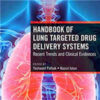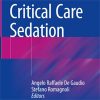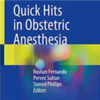Factors influencing physical activity and rehabilitation in survivors of critical illness
readcube.comEighty-nine papers were included. Five major themes and 28 sub-themes were identified, encompassing: (1) patient physical and psychological capability to perform physical activity, including delirium, sedation, illness severity, comorbidities, weakness, anxiety, confidence and motivation; (2) safety influences, including physiological stability and concern for lines, e.g. risk of dislodgement; (3) culture and team influences, including leadership, interprofessional communication, administrative buy-in, clinician expertise and knowledge; (4) motivation and beliefs regarding the benefits/risks; and (5) environmental influences, including funding, access to rehabilitation programs, staffing and equipment.
The main barriers identified were patient physical and psychological capability to perform physical activity, safety concerns, lack of leadership and ICU culture of mobility, lack of interprofessional communication, expertise and knowledge, and lack of staffing/equipment and funding to provide rehabilitation programs. Barriers and enablers are multidimensional and span diverse factors. The majority of these barriers are modifiable and can be targeted in future clinical practice.

















